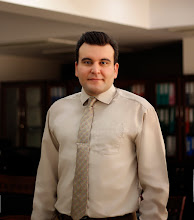Constructed languages:
Some individuals and groups have constructed their own artificial languages, for practical, experimental, personal, or ideological reasons. International auxiliary languages are generally constructed languages that strive to be easier to learn than natural languages; other constructed languages strive to be more logical ("loglangs") than natural languages; a prominent example of this is Lojban.

Some writers, such as J. R. R. Tolkien, have created fantasy languages, for literary, artistic or personal reasons. The fantasy language of the Klingon race has in recent years been developed by fans of the Star Trek series, including a vocabulary and grammar.
Constructed languages are not necessarily restricted to the properties shared by natural languages.
This part of ISO 639 also includes identifiers that denote constructed (or artificial) languages. In order to qualify for inclusion the language must have a literature and it must be designed for the purpose of human communication. Specifically excluded are reconstructed languages and computer programming languages.

International auxiliary languages:
Some languages, most constructed, are meant specifically for communication between people of different nationalities or language groups as an easy-to-learn second language. Several of these languages have been constructed by individuals or groups. Natural, pre-existing languages may also be used in this way - their developers merely catalogued and standardized their vocabulary and identified their grammatical rules. These languages are called naturalistic. One such language, Latino Sine Flexione, is a simplified form of Latin. Two others, Occidental and Novial, were drawn from several Western languages.
To date, the most successful auxiliary language is Esperanto, invented by Polish ophthalmologist Zamenhof. It has a relatively large community roughly estimated at about 2 million speakers worldwide, with a large body of literature, songs, and is the only known constructed language to have native speakers, such as the Hungarian-born American businessman George Soros. Other auxiliary languages with a relatively large number of speakers and literature are Interlingua and Ido.
(Shahab Mahdavi)




1 comments: on "Can a language be constructed?"
I think that the choice of the choice of the future global language lies between English or Esperanto. At least at the moment.
It's unfortunate however that only a few people know that Esperanto has become a living language.
After a short period of 121 years Esperanto is now in the top 100 languages, out of 6,800 worldwide, according to the CIA factbook. It is the 17th most used language in Wikipedia, and in use by Skype, Firefox and Facebook.
Native Esperanto speakers,(people who have used the language from birth), include George Soros, World Chess Champion Susan Polger, Ulrich Brandenberg the new German Ambassador to NATO and Nobel Laureate Daniel Bovet.
Further arguments can be seen at http://uk.youtube.com/watch?v=_YHALnLV9XU Professor Piron was a translator with the United Nations in Geneva.
A glimpse of Esperanto can be seen at http://www.lernu.net
Post a Comment